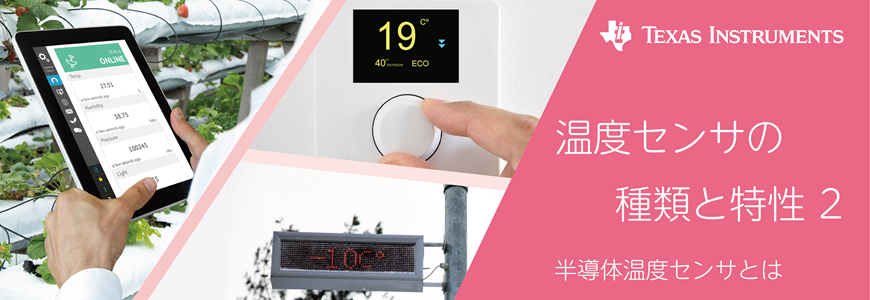In the previous article, we introduced the characteristics of thermocouples, RTDs, and thermistors. In Part 2, we will introduce semiconductor temperature sensors.
Types and Characteristics of Temperature Sensor Series
Part 1 Characteristics of thermocouples, RTDs, and thermistors
Part 2 What is a semiconductor temperature sensor?
Part 3: Application Examples of Semiconductor Temperature Sensors
What is a semiconductor temperature sensor?
A typical semiconductor temperature sensor is a "Si diode". Si diode Vf (forward voltage) has a temperature coefficient of -2mV/°C, and Vf decreases as the temperature rises. The temperature can be measured by measuring the voltage across the diode.
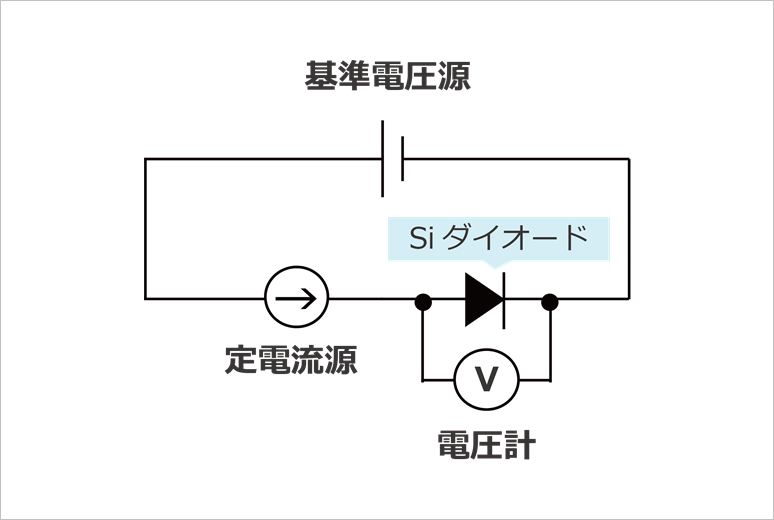
A PNP transistor can also be substituted for the Si diode. If so, measure the voltage between emitter and base. Since the Vf of the diode depends on the current value, a highly accurate constant current source is required. This measurement method is often used for temperature measurement inside ICs such as processors and ASICs.
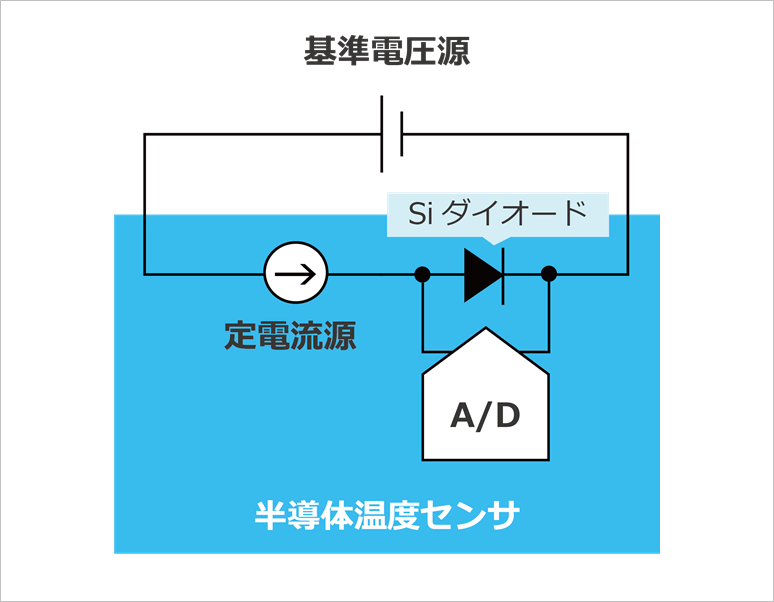
Types of semiconductor temperature sensors
Semiconductor temperature sensors can be roughly divided into two types, analog and digital, in terms of how they represent temperature. Analog outputs temperature as a voltage, and digital outputs two values of "0" and "1". There is also a switch type that outputs "1 (High)" if the temperature is higher than the set value, and "0 (Low)" if it is lower.
Analog output type
For analog output, a high-precision constant current source and Si diode are integrated, and Vf is output as is. This type is often used as a replacement from RTC. By using it where the RTC is used, the AFE part can be changed and used as before.
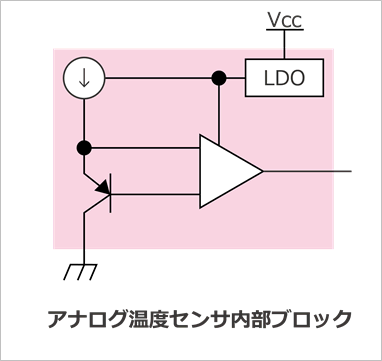
Digital output type
Digital output can cover everything from temperature detection to temperature data output (communication) with a single element, making it possible to reduce the size and cost of equipment.
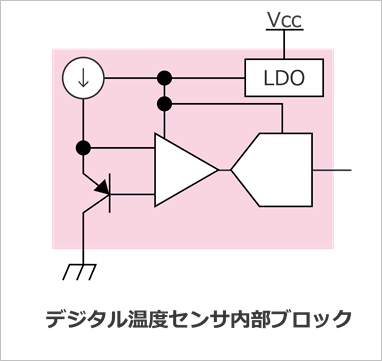
Switch output type
The switch output is the type often used for trips related to critical temperatures. For example, if you don't need to measure the absolute value of temperature using an ADC or the like, but want to stop it when it reaches a certain temperature, use the switch type.
Also, since the output is HorL, it can be received by GPIO instead of ADC or I2C, so there are no design restrictions.
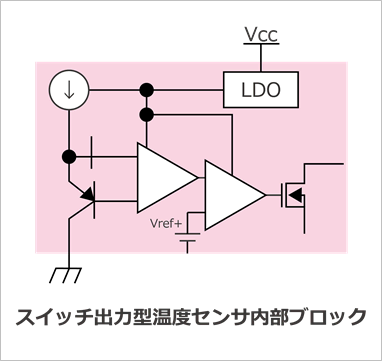
Comparison table of RTDs and semiconductor temperature sensors
Let's compare typical RTD platinum resistors (hereafter Pt100), thermistors, and semiconductor temperature sensors.
| thermistor | Pt100 | semiconductor temperature sensor | |
| temperature range | -100°C to +500°C | -240°C to 700°C | -55°C to +150°C |
| accuracy | low | high | high/medium |
| linearity | low | During ~ | high |
| Peripheral circuit | Many | Many | Not required / little |
| circuit cost | expensive | expensive | inexpensive |
Semiconductor temperature sensors are not as accurate as Pt100, but they are much better than thermistors. Because high-precision reference voltage sources and AFEs (operational amplifiers and A/D converters) can be omitted, the cost of the entire circuit is the lowest for semiconductor temperature sensors, even considering the peripheral circuits and price.
High-precision semiconductor temperature sensor also used in medical equipment
Here are three recommended types of semiconductor temperature sensors from Texas Instruments (hereafter TI).
| LMT70 | TMP116 | TMP117 | |
| Output method | analog | I2C, SMBus, 2-Wire | |
| Supply Range | 2.5V to 5.5V | 1.9V to 5.5V | 1.8V to 5.5V |
| I2C address variation | -- | 4 | |
| accuracy, error | 0.13°C (20°C to 42°C) 0.20°C (-20°C to 90°C) 0.36°C (-55°C to 150°C) |
0.10°C (30°C to 45°C) 0.20°C (-55°C to 125°C) |
0.10°C (-20°C to 50°C) 0.15°C (-40°C to 70°C) 0.20°C (-40°C to 100°C) 0.25°C (-55°C to 125°C) 0.30°C (-55°C to 150°C) |
| resolution | -5.18 mV/°C | 16-bit | |
| Static operating current | 12uA | 4.5uA | |
| shutdown current | 50nA | 500nA | |
| package | WCSP 0.8mmx0.8mm | WSON 2.0mm x 2.0mm | |
Both are within the Pt100 standard defined by JIS, so they have the same accuracy as Pt100. The LMT70 has a very small package and does not affect the mounting area when replacing chip-type thermistors.
Since the TMP116 can be set to 4 different addresses, up to 4 can be connected on the I2C bus. In addition, due to its high accuracy, TMP117 is compliant with ASTM E1112 (Clinical temperature measurement specifications) and ISO 80601-2-56 (Medical electrical equipment - Part 2-56: Basic safety and basic performance of clinical thermometers for measuring body temperature). individual requirements).
If you want to know the usage example of semiconductor temperature sensor, please see Part 3.
This time, I introduced that the semiconductor temperature sensor is the best part of the RTD in terms of cost and system.
Next time, we will introduce an example of using a semiconductor temperature sensor.
Part 3: Examples of semiconductor temperature sensor usage
Please feel free to contact us for quotations and replacement consultations for the products introduced this time.
Click here for recommended articles/materials
Types and Characteristics of Temperature Sensor Series
Part 1 Characteristics of thermocouples, RTDs, and thermistors
Part 2 What is a semiconductor temperature sensor?
Part 3: Application Examples of Semiconductor Temperature Sensors
What is a sensor? Basic knowledge for digitization and IoT

